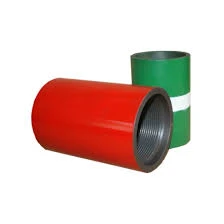- Afrikaans
- Albanian
- Amharic
- Arabic
- Armenian
- Azerbaijani
- Basque
- Belarusian
- Bengali
- Bosnian
- Bulgarian
- Catalan
- Cebuano
- Corsican
- Croatian
- Czech
- Danish
- Dutch
- English
- Esperanto
- Estonian
- Finnish
- French
- Frisian
- Galician
- Georgian
- German
- Greek
- Gujarati
- Haitian Creole
- hausa
- hawaiian
- Hebrew
- Hindi
- Miao
- Hungarian
- Icelandic
- igbo
- Indonesian
- irish
- Italian
- Japanese
- Javanese
- Kannada
- kazakh
- Khmer
- Rwandese
- Korean
- Kurdish
- Kyrgyz
- Lao
- Latin
- Latvian
- Lithuanian
- Luxembourgish
- Macedonian
- Malgashi
- Malay
- Malayalam
- Maltese
- Maori
- Marathi
- Mongolian
- Myanmar
- Nepali
- Norwegian
- Norwegian
- Occitan
- Pashto
- Persian
- Polish
- Portuguese
- Punjabi
- Romanian
- Russian
- Samoan
- Scottish Gaelic
- Serbian
- Sesotho
- Shona
- Sindhi
- Sinhala
- Slovak
- Slovenian
- Somali
- Spanish
- Sundanese
- Swahili
- Swedish
- Tagalog
- Tajik
- Tamil
- Tatar
- Telugu
- Thai
- Turkish
- Turkmen
- Ukrainian
- Urdu
- Uighur
- Uzbek
- Vietnamese
- Welsh
- Bantu
- Yiddish
- Yoruba
- Zulu
Bull Plug Wellhead Solutions | Advanced Wellhead Technology
Understanding Bull Plug Wellheads in Oil and Gas Production
In the oil and gas industry, the wellhead is a critical component, serving as the primary access point for extraction and a protective barrier against the elements. One specific type of wellhead assembly is the bull plug wellhead, which plays an essential role in managing pressure and facilitating maintenance operations during drilling and production activities.
What is a Bull Plug Wellhead?
A bull plug wellhead is designed to seal off the well bore, preventing the escape of fluids while allowing for intervention and extraction processes to occur safely. The bull plug itself is a robust sealing element that can be installed or removed without the need to dismantle the entire wellhead assembly. This feature is vital as it saves time and resources by minimizing downtime during operations.
Components and Functionality
Typically, a bull plug wellhead consists of several key components the casing head, tubing head, and the bull plug or valve itself. The casing head is anchored to the surface and provides a foundation for the wellhead structure. It also serves as the connection point for casing pipes that extend into the wellbore. The tubing head, which is mounted above the casing head, facilitates the connection of tubing strings that transport oil or gas to the surface.
bull plug wellhead

When a bull plug is utilized, it can be easily installed in the tubing head to secure the well. This is particularly useful in situations where the well needs to be temporarily shut in or when maintenance work is required. The bull plug ensures that pressure is maintained within the wellbore, preventing blowouts and other hazardous incidents.
Advantages of Bull Plug Wellheads
One of the significant advantages of bull plug wellheads is their versatility. They can be used in various applications, from exploratory drilling to production wells, making them a popular choice among operators. Moreover, the ease of installation and removal of the bull plug enhances operational efficiency, allowing for quicker responses to changes in well conditions or requirements.
Additionally, the reliable sealing provided by the bull plug helps to mitigate environmental risks associated with oil and gas production. This aspect is becoming increasingly pertinent as regulations surrounding environmental protection become more stringent, urging companies to adopt safer practices.
Conclusion
In summary, bull plug wellheads are essential components in the oil and gas industry that facilitate efficient operations while enhancing safety. As the industry continues to evolve and adapt to new challenges, the importance of reliable wellhead systems, including bull plugs, will likely grow. With their ability to manage pressure effectively and provide straightforward maintenance options, bull plug wellheads will remain an integral part of successful oil and gas production strategies.
-
Tubing Pup Joints: Essential Components for Oil and Gas OperationsNewsJul.10,2025
-
Pup Joints: Essential Components for Reliable Drilling OperationsNewsJul.10,2025
-
Pipe Couplings: Connecting Your World EfficientlyNewsJul.10,2025
-
Mastering Oilfield Operations with Quality Tubing and CasingNewsJul.10,2025
-
High-Quality Casing Couplings for Every NeedNewsJul.10,2025
-
Boost Your Drilling Efficiency with Premium Crossover Tools & Seating NipplesNewsJul.10,2025







